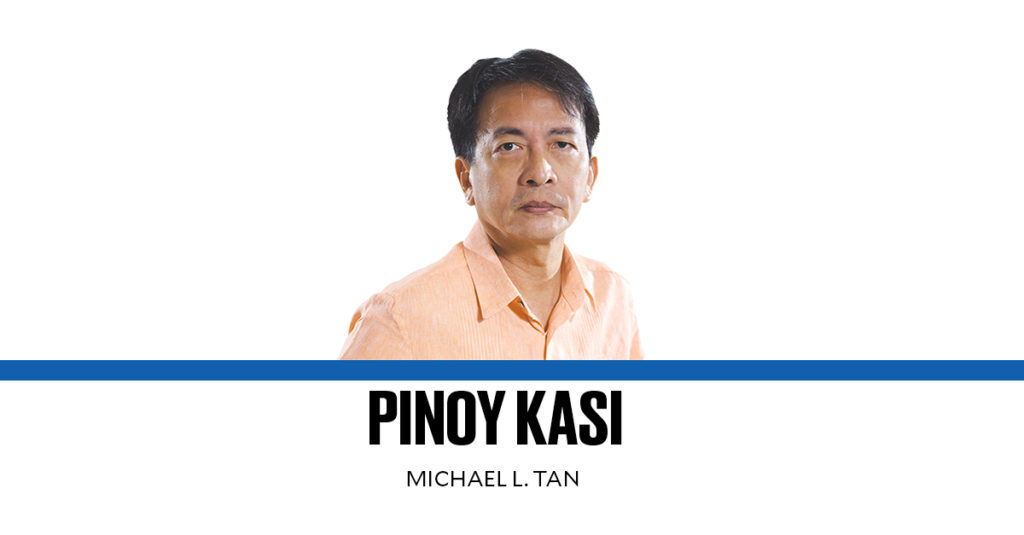Even before COVID-19, many Filipino families have been visiting the dead on days other than the week of Nov. 1 to avoid traffic congestion and crowds.
I’m hoping though we will set aside family time during the week — many schools will not be having online classes — for remembrances, and for some discussion or, to use psychological jargon, some processing of life and death issues.
COVID-19 has brutally challenged us to think about our vulnerabilities, about uncertainties of life, and about death. I have never attended so many wakes and funerals — all online — in such a short period of time, and always with a feeling of a lack of closure because of the COVID restrictions.
Add on having to console friends with relatives who are infected, worse if someone is in critical condition, made all the more difficult by not being able to visit the patients.
Caring for the sick, with COVID or not, has become so much more stressful too. I just survived my own crisis of several weeks doing long-distance caring for a cousin with terminal cancer. For privacy reasons, I will not be giving details about her except to say she was still young (44) with few family ties, and living in a city in Mindanao.
I was flabbergasted when she contacted me in June to ask for help with medical expenses, the doctors already diagnosed her cancer as stage 4, the most advanced, and that the cancer had spread to the lungs and to her bones. She had postponed asking for professional help for years literally, knowing but not wanting to know.
But when the diagnosis came out, she went into denial, hoping to recover through chemo and surgery. I got second and third opinions here in Manila and all agreed the cancer was too advanced for chemo and surgery to make a difference.
Just the tests and hospitalization ran up bills, often higher than Manila, for example a COVID swab test (PCR) costing P5,000.
I had to explain to my cousin that money would be better spent on palliative care — especially for pain management — a caregiver, good nutrition.
Her last month was harrowing, worsened by cultural reasons. I asked her family to ban visitors, or at least reduce the time for visiting. I know patients themselves might want to see loved ones but the risks are so high, not just for COVID but for other infections, not to mention psychological risks. The caregivers would call me to say my cousin was upset by some visitor, hearing gossip and intrigues. Another visitor stayed for a full five hours, from early evening to midnight asking too many questions.
That’s it, I said, absolutely no visitors to enter the room. By then, my cousin was semi-comatose anyway.
On her last day I got the latest medical update and I knew it was time. In Chinese-Filipino culture, young people have to take leave (paalam) while elders (like myself) also have to give leave. I called to do that, more of consoling and reassuring her that she could go, gently repeating “an sim” (be at peace). She passed a few minutes after I finished the call.
That’s all part of online caregiving in our COVID times.
Then I had to gird myself knowing what was to come, this time of her handful of friends and relatives wanting a long wake, but no one wanting to pay for it. We ended up with two days because of government permits and bureaucracies, and having to prepare the burial site.
I’m totally in favor of limiting wakes. I know at least one cluster of COVID cases that started at the funeral parlor — heaven knows how many people “Patient X” infected but on our end (our office), we ended up with three infections, none of them even knowing the deceased!
We do need to regulate Zoom, too, which seems to have become a carte blanche for infinity wakes and novenas, the latter up to nine days and each lasting for hours with everyone having their own PowerPoint presentation to accompany their eulogies, complete with music.
Let’s think more of the living, whether patients, or bereaved relatives. Several years ago, there was a local comedy film entitled “Nagalit ang Patay sa Haba ng Lamay.” One of these days we’ll have the irate dead rising from the coffin or, like in “Aladdin,” floating out of a cremation urn with a wisp of smoke. A wake that wakes up the dead.
